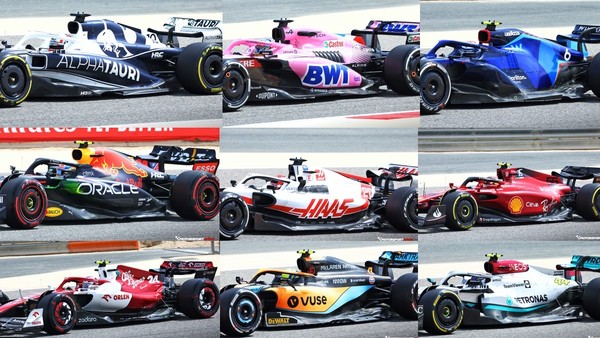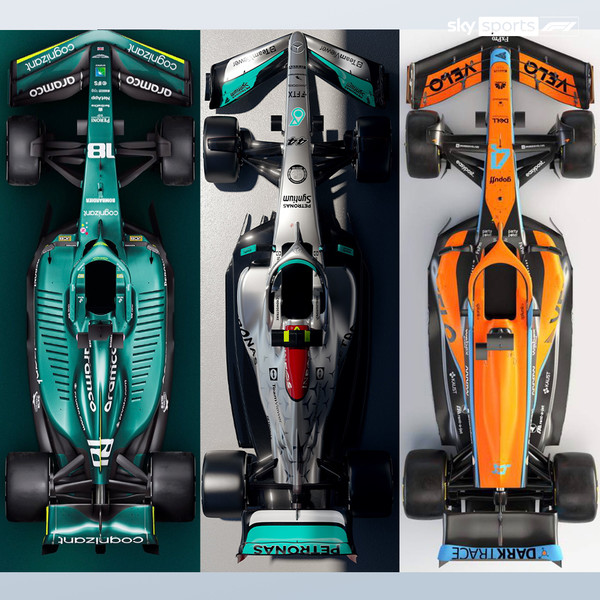The ever-glamorous sport of Formula 1 (F1) took over global headlines toward the end of last year. The then two World Championship contenders — Max Verstappen and Sir Lewis Hamilton — went into the final race on equal points, something that hadn’t been seen in almost 50 years. A controversial last lap decision by the Racing Director meant Hamilton fell short of a record 8th World Championship title, while many celebrated the crowning of a first-ever Dutch Formula 1 World Champion in Max Verstappen. The new season is finally upon us, but controversies and drama have remained an ever-present part of the sport.
As did many international sporting organizations at the time, the Fédération Internationale de l’Automobile (FIA) made a statement about the Russia-Ukraine conflict as the governing body of the F1 Championship. On March 1, they announced a list of restrictions imposed on FIA sponsored events for Russian teams, drivers, sponsors, and employees. All races in Russia or Belarus were to be ceased until further notice, including the Russian Grand Prix in Sochi, and no flag or symbol of the respective countries were to be shown at any FIA-sponsored event. All Russia-based racing teams and sponsors were banned from FIA events until further notice. This still allowed Russian drivers to race in these events, albeit under a neutral flag.
The most notable change was the upheaval of the Haas Formula 1 team. Previously having the Russian company Uralkali as their title sponsor as well as Russian driver Nikita Mazepin in their driver lineup, the team terminated the partnership with both entities on March 5. Understandably, there were legal actions taken by Uralkali over the already-paid sponsorship money, and Mazepin broke his silence over the matter several days after the press announcement by his team. Reportedly, Mazepin was only made aware of his terminated contract at the same time it was publically announced by his ex-F1 team without any prior discussion. This seemed rather unprofessional to Mazepin, and this sentiment was shared by many. In a recent media conference, the Russian driver stated that he was prepared to accept all terms from the FIA about his eligibility to drive, and was reportedly also told by the Haas team that there would be no actions taken to remove his position if he agreed to the said terms.
Given this information, the actions taken by the team seem spontaneous at best. The Team Principal Guenther Steiner is not one to shy away from team updates and media conferences, and the fact that the only warning sign of this upheaval was the removal of the Uralkali logo on February 25 is a sign that there may be something going on behind the scenes. Despite the recent liveries of the Haas F1 car, the team is actually based in North Carolina in the US and is owned by Gene Haas — founder of Haas Automation and the NASCAR team Stewart-Haas Racing, along with the Haas F1 Team. Given the United States’ stance on the current European conflict, it is entirely possible that there were both internal and external pressures to remove both Mazepin and Uralkali from the team. Meanwhile, Mazepin has made it clear that even in the event of the opportunity to re-join F1 as a driver, he would no longer be interested in the Haas team due to these events.
On the technical side of things, the changes in the F1 regulations on race car design meant that every team was working off a new car model, the drastically different designs apparent when each car was first spotted in Barcelona for pre-season testing. One of the biggest areas for engineering creativity came with the design of the “sidepods” of the car, sections on the sides of the car body that aid in airflow intake to cool the engine. With this year’s cars returning to the use of ground effect — a reversed use of an aerofoil — controlling the air passing through the rear diffusers of the car is more important than ever.


As an open-wheeled sport, the turbulent air coming off the front wheels has always been a problem for aerodynamicists to deal with. The traditional solution to this has been to direct this turbulent air away from and behind the car with aerodynamic designs. However, this makes it very difficult for cars to race closely behind one another due to turbulent air. The option that aerodynamicists are left with is to prevent the turbulent air from sticking to the body of the car and following it towards the rear diffuser, where it would disrupt the low pressure generated under the car. To this end, the sidepods of the car have largely been used to separate the turbulent airflow from the wheels and the clean air flow coming from the front wing. However, reigning constructors champion team Mercedes-Benz interpreted the problem differently. Their sidepod design, or lack thereof, has taken the approach of avoiding the problem entirely. They have kept the sidepod design slim enough to prevent the turbulent airflow from the front wheels from sticking to the car’s bodywork, maintaining the clean air flow toward the end of the car.
Design innovations are all well and good, but what does this mean for the prospects of each driver? The question on everyone’s minds is whether the Mercedes team will continue the domination they’ve had over F1 for the past eight years. Mercedes driver Hamilton has addressed this question to the media during the pre-season testing in Bahrain: “At the moment, I don’t think we’ll be competing for wins.” This sentiment was shared with his teammate George Russell, who commented that they still have quite a bit of pace to find.
So where does this leave us? Long-time fans of F1, as well as some other drivers on the grid, had skepticisms about the downplaying of the two Mercedes drivers during the pre-season testing, dubbed “sandbagging”. It’s been seen before, with the Mercedes team commenting on their own shortcomings and struggles before dominating the rest of the season with unbelievable car upgrades. This was quite neatly summarized by Ferrari driver Carlos Sainz, who called it “typical” for Mercedes to “hype up the others” during the pre-season testing.
We finally saw the results of the testing phases during the first Grand Prix in Bahrain, from March 18 to 20. The Ferrari team seems to be on top by a significant margin, taking both first and second place in the season opener. The Redbull team are the closest to the Prancing Horses but dropped out of the race due to engine issues. Every team has major areas for improvement, as was expected after a complete car design change.
The start of this season has been a memorable one, with many calling it the most anticipated season of F1 yet. It is impossible to know whether the results we have seen so far will set the precedent for the season, or whether there’ll be upsets. Nevertheless, this season will be one you cannot miss.

